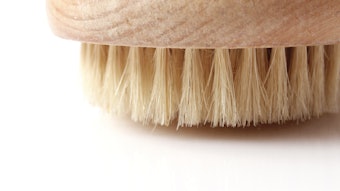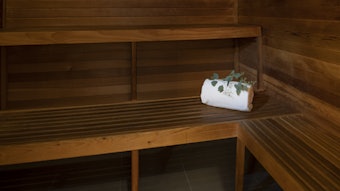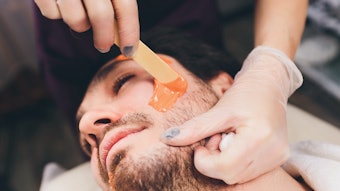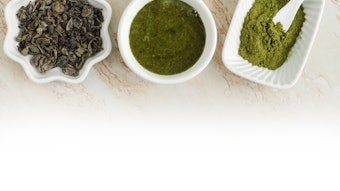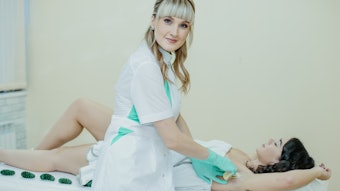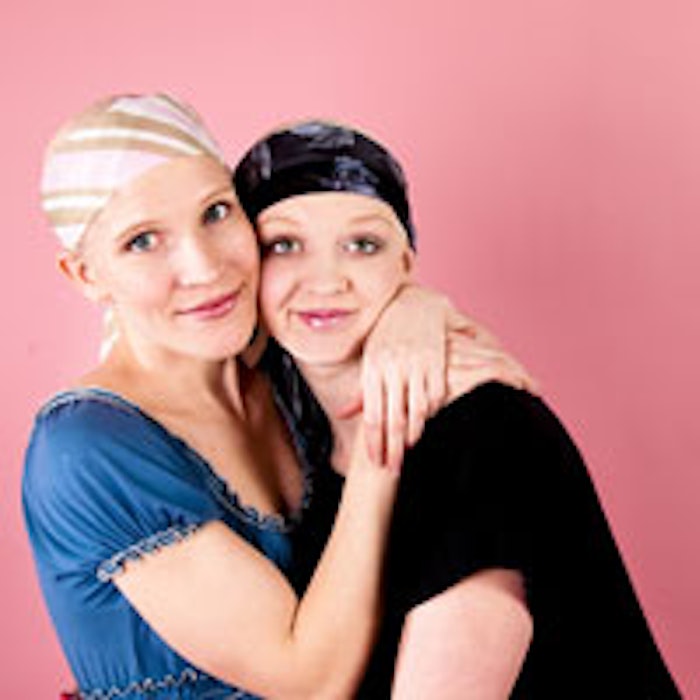
In 2013, breast cancer continues to be the most common cancer diagnosis—except for skin cancers—for women in America, Australia, Canada, Italy, New Zealand and the United Kingdom. Approximately 1 in 8 or 9 women will develop breast cancer during their lifetimes.
Fewer women are dying from breast cancer today than in the past. Breast cancer deaths have decreased due to earlier detection and breast cancer awareness. This awareness is imperative, and all skin care professionals need to be educated about the signs and symptoms that may be recognized during spa treatments, such as underarm waxing, body wraps or other skin care services. By being aware, you can help save a life!
Because a large percentage of women of all ages—and more and more men—visit spas, skin care professionals cannot shy away from breast cancer statistics. This article focuses on breast cancer education to coincide with Breast Cancer Awareness Month and raise the awareness of skin care professionals, addressing the different types of breast cancer—including noninvasive, invasive, recurrent and metastatic breast cancers—as well as breast cancer in men.
Structure
Both women and men have breasts; women just have more breast tissue. Each breast lies over the pectoral muscle. The female breast extends from just below the clavicle, to the axilla and across to the sternum. (See The Breast and Surrounding Structures.)
The breast is a mass of glandular, fatty and connective tissue made up of:
- Lobules—glands that produce milk;
- Ducts—tubes that carry milk from the lobules to the nipple;
- Fatty and connective tissue—surrounds and protects the ducts and lobules, and gives shape to the breast;
- Areola—the pink or brown circular area around the nipple; and
- Nipple—the area at the center of the areola that dispenses milk. (See The Breast.)
Ligaments support the breast. They run from the skin through the breast and attach to muscles on the chest.
Breast cancer can begin in different areas of the breast: the ducts, the lobules or, in some cases, the tissue in between. There are several types of breast cancer, but some of them are quite rare. In some cases, a single breast tumor can be a combination of types, or be a mixture of invasive and in situ cancer.
Common types of breast cancer
Ductal carcinoma in situ (DCIS). DCIS is the most common type of noninvasive breast cancer. DCIS is called “noninvasive” because it doesn’t spread beyond the milk duct into any normal surrounding breast tissue. DCIS isn’t life-threatening, but having it can increase the risk of developing an invasive breast cancer later on in life. A client who has had DCIS is at higher risk for the cancer coming back or for developing a new breast cancer than a client who has never had breast cancer before. Most recurrences happen within 5–10 years after initial diagnosis.
Signs and symptoms. DCIS generally has no signs or symptoms. A small number of people may have a lump in the breast or some discharge from the nipple.
Lobular carcinoma in situ (LCIS). LCIS is an area of abnormal cell growth that increases a person’s risk of developing invasive breast cancer later on in life. “Lobular” means that the abnormal cells start growing in the lobules, the milk-producing glands at the end of the breast ducts. People diagnosed with LCIS tend to have more than one lobule affected.
Despite the fact that its name includes the term “carcinoma,” LCIS is not a true breast cancer. It is an indication that a client is at higher-than-average risk for getting breast cancer at some point in the future.
Signs and symptoms. LCIS usually does not cause any signs or symptoms, such as a lump or other visible changes to the breast.
Invasive ductal carcinoma (IDC). This is the most common type of breast cancer. IDC starts in a milk duct of the breast, breaks through the wall of the duct and grows into the fatty tissue of the breast. If it gets to this fatty tissue, it may metastasize to other parts of the body through the lymphatic system and bloodstream.
Signs and symptoms. Sometimes, the first sign of IDC is a new lump or mass in the breast that can be felt. (See Signs and Symptoms of IDC and ILC.)
Invasive lobular carcinoma (ILC). This second most common type of invasive breast cancer starts in the milk-producing lobules. Like IDC, it can metastasize to other parts of the body. Some research has suggested that the use of hormone replacement therapy during and after menopause can increase the risk of ILC.
Signs and symptoms. In the beginning, ILC may not cause any symptoms. The first sign is a thickening or hardening in the breast that can be felt, rather than a distinct lump. (See Signs and Symptoms of IDC and ILC.)
Less common types of breast cancer
Inflammatory breast cancer (IBC). This is a rare and aggressive form of breast cancer; however, it needs to be known about due to its aggressive nature.
Signs and symptoms. Inflammatory breast cancer usually starts with a feeling of thickness or heaviness in the breast. It may also have the following symptoms.
- Redness of the breast
- Swelling of the breast
- Warmth
- Orange-peel appearance
- Pink or bruised appearance, or the appearance of ridges, welts or hives
- Swelling of lymph nodes
- Flattening or inversion of the nipple
- Aching or burning
Some of these symptoms are similar to those caused by mastitis, a breast infection that can occur in women who are breastfeeding.
Triple-negative breast cancer. Triple-negative breast cancer is a subtype of breast cancer that is generally diagnosed based upon the presence, or lack, of three “receptors” known to fuel most breast cancers: estrogen receptors, progesterone receptors and human epidermal growth factor receptor 2 (HER2). The most successful treatments for breast cancer target these receptors.Triple-negative breast cancers tend to grow and spread more quickly than most other types of breast cancer, and are more likely to spread beyond the breast and to recur after treatment.
Signs and symptoms. These include lumps in breast, changes in breast size or shape, changes in the feel of the nipple or breast, and yellowish or bloody nipple fluid discharge.
Paget’s Disease. This type of breast cancer starts in the breast ducts and spreads to the skin of the nipple, then to the areola. It is rare, accounting for only about 1% of all cases of breast cancer. Paget’s is often mistaken for eczema (a severe skin rash and inflammation), an infection or injury, or some other skin condition. For many people, it can take several months to get a correct diagnosis. Paget Disease is almost always associated with either DCIS or IDC.
Signs and symptoms. Paget’s Disease causes the skin on and around the nipple to become red, sore, flaky or scaly. At first, these symptoms tend to come and go. Over time, symptoms of Paget’s Disease usually worsen and may include:
- Itching, tingling and/or a burning sensation;
- Pain and sensitivity;
- Scaling and thickening of the skin;
- Flattening of the nipple; and
- Yellowish or bloody discharge from the nipple.
Phyllodes tumor. Phyllodes tumors of the breast are rare, accounting for less than 1% of all breast tumors. Phyllodes tumors tend to grow quickly, but they rarely spread outside the breast. Although most phyllodes tumors are benign, some are malignant, and some are in between noncancerous and cancerous. All three kinds of phyllodes tumors tend to grow quickly within a period of weeks or months, to a size of 2–3 cm or sometimes larger. This rapid growth does not automatically mean the phyllodes tumor is malignant; benign tumors can grow quickly, too. The lump is usually not painful. If left unchecked, it can create a visible bulge as it pushes against the skin. In more advanced cases, a phyllodes tumor can cause an ulcer or open wound to form on the breast skin.
Signs and symptoms. A lump may be felt while examining the breasts.
Breast cancer in men. Although rare, breast cancer in men can occur. Both women and men have breast tissue; hormones in females stimulate breast tissue to grow into full breasts. Males normally don’t make much of the breast-stimulating hormones. As a result, their breast tissue usually stays flat and small.
Signs and symptoms. These include any persistent changes to the breasts, such as a lump, nipple pain, an inverted nipple, nipple discharge, sores on the nipple and areola, and/or enlarged lymph nodes under the arm. Enlargement of both breasts (not just on one side) is usually not cancer. This is known as gynecomastia. Sometimes, male breasts can become quite large. Noncancer-related enlargement of the breasts can be caused by medications, heavy alcohol use, weight gain or marijuana use.
Holistic or complementary spa therapies
Many women are strongly attracted to holistic or complementary therapies, which often seem to be more natural, gentle and supportive, and appear to have fewer side effects than most conventional therapies. Plus, many people feel disappointed by medical treatments they have tried, because they failed to prevent the cancer from coming back. Many clients who have been through a great deal of cancer testing and treatment feel that, although their physicians may do a great job of treating the cancer, they don’t have the time or expertise to help with their mental and emotional needs.
Holistic or complementary therapies, such as a facial, manicure or pedicure, can make a difference in a person’s treatment, and in their feelings about wellness and illness. These therapies see the mind, body and spirit as partners in healing and well-being. And when the mind, body and spirit are not functioning well together, they can also be partners contributing to “dis-ease.”
Studies have shown that relaxation therapy or acupuncture can ease pain. And even if holistic or complementary therapies do not lengthen a person’s life, they may improve her quality of life while she undergoes cancer treatment. Some physicians will combine both complementary and standard treatments, drawing on the strengths of each. This is often called “integrative oncology.”
Many physicians are not familiar with all the holistic or complementary therapies available to the spa client. This may mean that your client’s physician may disapprove of her interest in a spa treatment. This requires educating your client and, in turn, having them educate their physician about the services you will provide.
As skin care professionals, you can educate clients about the importance of regular, monthly breast self-exams and you need to be aware of—and to help your clients become aware of—changes occurring in, on and around the breasts and underarm areas.
GENERAL REFERENCES
- www.cbcf.org/central/AboutBreastCancerMain/AboutBreastCancer/Pages/BreastCancerinCanada.aspx
- www.bcna.org.au/about-breast-cancer
- www.nzbcf.org.nz/component/content/article/ 9-news/238-breast-cancer-in-new-zealand
- www.breastcancercampaign.org/about-breast-cancer/breast-cancer-statistics
- www.wcrf.org/cancer_statistics/data_specific_cancers/breast_cancer_statistics.php
- www.discoverspas.com/news/EmergingGlobalSpaTrends-HiltonBluePaper-July2012.pdf
- www.breastcancer.org
- K Dedes and D Fink, Clinical Presentation and Surgical Management of Invasive Lobular Carcinoma of the Breast, Breast Dis 30 31–37 (2008–2009)
- www.iarc.fr
- www.worldwidebreastcancer.com/learn/breast-cancer-statistics-worldwide/
- www.nzbcf.org.nz/OURFOCUS/AwarenessandEducation/EducationProgramme.aspx
- www.cancer.org/cancer/breastcancer/overviewguide/breast-cancer-overview-key-statistics
- KL Syrjala, GW Donaldson, et al, Relaxation and imagery and cognitive-behavioral training reduce pain during cancer treatment: a controlled clinical trial Pain 63 2 189–98 (Nov 1995)
- L Zeltzer and S LeBaron, Hypnosis and nonhypnotic techniques for reduction of pain and anxiety during painful procedures in children and adolescents with cancer J Pediatr 101 1032–1035 (1982)
- LG Walker and MB Walker, et al. Psychological, clinical and pathological effects of relaxation training and guided imagery during primary chemotherapy Br J Cancer 80 262–268 (1999)
- D Carrol and K Seers, Relaxation for the relief of chronic pain: A systematic review J Adv Nursing 27 476–487 (1996)
(All websites accessed Jul 31, 2013)

Morag Currin is an esthetic instructor with more than 19 years of spa industry experience, and more than 10 years of training and training management experience. She pioneered the Oncology Esthetics advanced training for spa professionals, and is the author of Oncology Esthetics: A Practitioner’s Guide (2009) and Health-challenged Skin: The Estheticians’ Desk Reference (2012).




